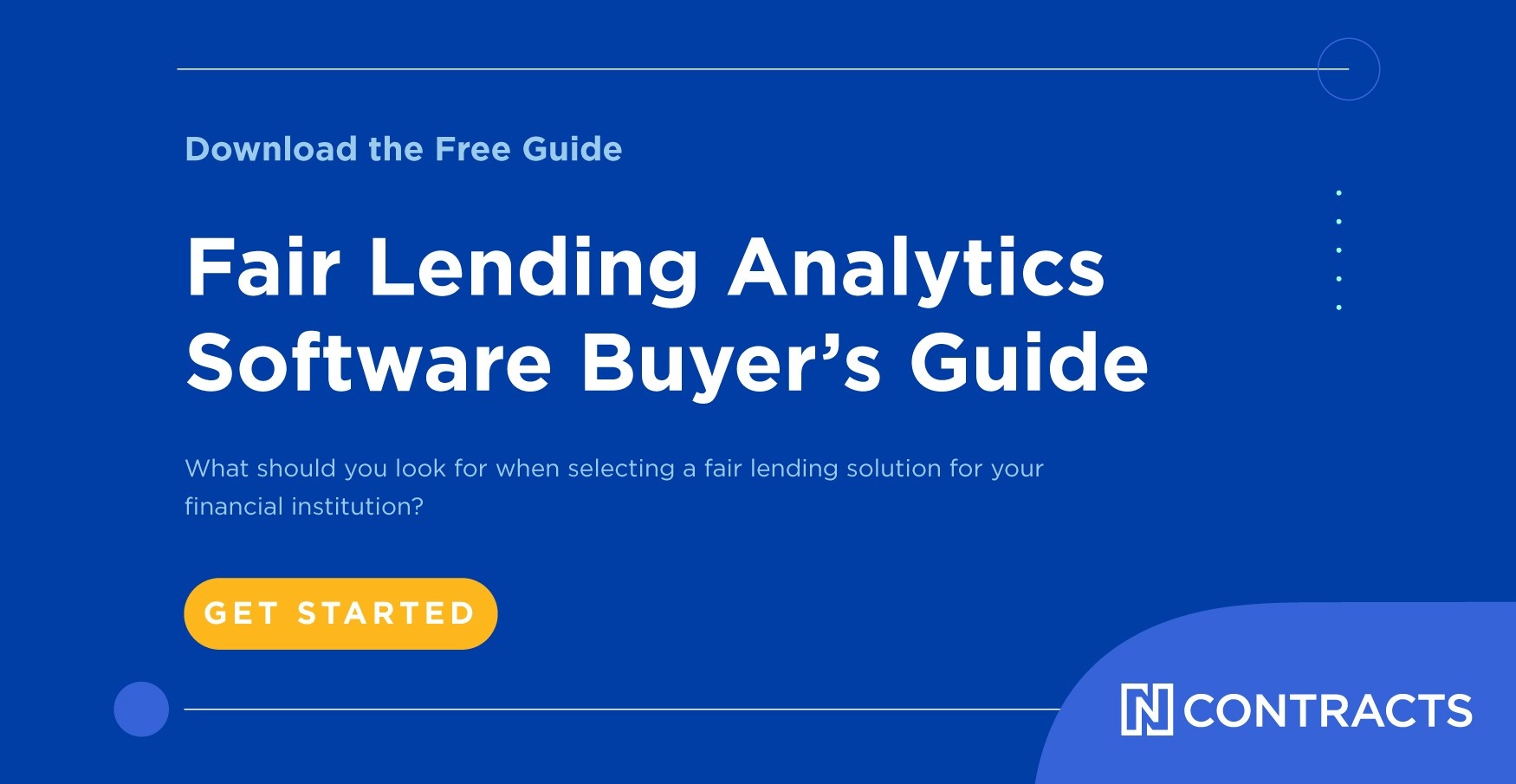Commercial lenders have a reputation for thinking they don’t need to worry about compliance and fair lending. A commercial lender’s bottom line is the bottom line. They don’t want to “waste” time on anything that doesn’t generate revenue.
But that mindset may end up costing the bottom line in the years ahead. The Consumer Finance Protection Bureau (CFPB) has announced that it’s planning to finally begin the rulemaking process implementing Section 1071 of the Dodd-Frank Act, which will require the collection and reporting credit application data submitted by women- and minority-owned businesses. A final rule is expected to be issued as soon as 2022.
Don’t wait until rule implementation to promote a culture of compliance in your commercial lending department. Here’s some talking points for helping your commercial lenders understand why they should care about compliance and fair lending.
Why Fair Lending Is a Commercial Loan Officer’s Problem
Once Section 1071 is implemented, the CFPB will collect a variety of HMDA-like data including the race, sex, and ethnicity of the principal business owners. This data isn’t just going to go into a vault and forgotten. It will be analyzed and assessed. If your commercial lenders aren’t complying with fair lending laws and regulations, examiners will know it—and they aren’t going to let it slide. The result can be enforcement actions, fines, and financial penalties that will cost the FI. It can also put a real damper on someone’s career.
Examiner Outlook: Where There’s Smoke, There’s Fire.
When an examiner finds a problem, he or she doesn’t just assume it’s a one-off. There is always the possibility it’s a symptom of a much bigger problem, including a weak compliance management system.
If fair lending data suggests problems with a commercial loan portfolio, examiners are likely to take a closer look at other areas of compliance. These include:
- Reg B – The Equal Credit Opportunity Act (ECOA). Lenders can’t discriminate based on race, color, religion, national origin, sex, marital status, or age and adverse action statements must be available. Spouses can’t be forced to sign loan notes if they have no interest in the business.
- Fair Credit Reporting Act (FCRA). A lender needs a borrower’s written permission to run a credit check and has certain obligations in the event of identity theft.
- Commercial Reinvestment Act (CRA). Banks with more than $1.2 billion in assets must report on small business and small farm lending.
- If a commercial loan is secured by a residential dwelling or if a commercial loan is used buy, improve or refinance a residential dwelling, the loan may be subject to HMDA reporting requirements.
- Service Members Relief Act (SCRA). This caps the interest rate of loans of service members on active duty at six percent on debts incurred before active duty. This includes business loans.
Why Commercial Lenders Should Care Today About Tomorrow’s Rules
The biggest objection of commercial lenders will be that it’s a waste of time worrying about rules that haven’t even been written yet. And it’s true that the data collection rules haven’t been written yet—but Reg B, FCRA, HMDA, SCRA and other regulations are on the books and enforceable. And if violations, when uncovered, are determined to be significant and ongoing, past enforcement actions suggest the regulatory agencies aren’t afraid to take a deep look into the past if they see a pattern of misconduct.
By ensuring commercial lending adheres to regulation in effect now, it can prevent problems down the road. Spending a little extra time on compliance today reduces the likelihood having to deal with a time-consuming violation down the road—not to mention the reputational fallout.
Inside the Mindset of a Commercial Lender
What can you do to encourage commercial lenders to take fair lending compliance seriously? Here are two insights into how they think and what you can do.
Insight #1 Demonstrate Knowledge of Commercial Lending & Lender Concerns
The reason smaller financial institutions excel at small business lending is because they are nimble and flexible. They don’t try to fit a square peg into a round hole. They try to find a square hole that will protect both the borrower and the safety and soundness of the bank. Commercial loan officers know their customers in a way that goes beyond numbers.
When developing compliance policies and procedures for commercial lenders, including those for fair lending, balance the desire to standardize products and underwriting guidelines with the need of the commercial loan officer to service the specific needs of his clients. Commercial officers need to comply with regulations, but they also need flexibility. Show them you understand their job and want to support their success—including their compliance.
Insight #2 Don’t Tell Them About Fair Lending Problems, Show Them
It’s much easier to make a case that compliance is a problem when you can point to a specific problem. A good first step is a fair lending risk assessment and review. Analyze the commercial loan portfolio for fair lending, HMDA, CRA and redlining to identify problem areas. It’s a lot harder for a commercial loan officer to argue that everything is fine when you can show them exactly what isn’t working.
Have you had success fostering a culture of compliance and promoting fair lending within your FI’s commercial lending department? Share your experiences in the comment section below.
